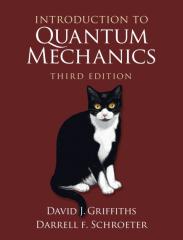This bestselling undergraduate quantum mechanics textbook is now available in a re-issued, affordable edition from Cambridge University Press. The text first teaches students how to do quantum mechanics, and then provides them with a more insightful discussion of what it means. The author avoids the temptation to include every possible relevant topic, instead presenting students with material that they can easily focus on in a complete treatment with few distractions and diversions. Fundamental principles are covered, quantum theory is presented, and special techniques are developed for attacking realistic problems. The innovative two-part coverage is entertaining and informative, organizing topics under basic theory and assembling an arsenal of approximation schemes with illustrative applications linked closely to the text.
Les mer
This text first teaches students how to do quantum mechanics, and then provides them with a more insightful discussion of what it means. Fundamental principles are covered, quantum theory is presented, and special techniques are developed for attacking realistic problems.
Les mer
Part I. Theory: 1. The wave function; 2. Time-independent Schroedinger equation; 3. Formalism; 4. Quantum mechanics in three dimensions; 5. Identical particles; Part II. Applications: 6. Time-independent perturbation theory; 7. The variational principle; 8. The WKB approximation; 9. Time-dependent perturbation theory; 10. The adiabatic approximation; 11. Scattering; 12. Afterword; Appendix. Linear algebra.
Les mer
This bestselling textbook teaches students how to do quantum mechanics and provides an insightful discussion of what it actually means.
Produktdetaljer
ISBN
9781107179868
Publisert
2016-08-16
Utgave
2. utgave
Utgiver
Cambridge University Press
Vekt
1130 gr
Høyde
255 mm
Bredde
183 mm
Dybde
25 mm
Aldersnivå
05, U
Språk
Product language
Engelsk
Format
Product format
Innbundet
Antall sider
465
Forfatter

